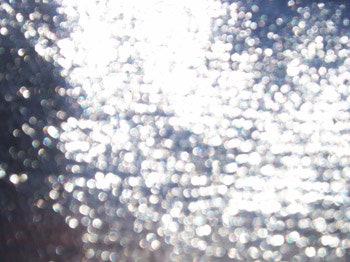
Though chlorine has a long and glorious history of killing dangerous things in people's pools, some homeowners treat it like a pariah. In their estimation, it presents as many problems as it prevents.
The good news is that you can cater to these chlorine-averse customers by selling them on ozone, UV or mineral water treatment as ways to reduce the need for large doses of chlorine in their pools.
"All of these products, whether ozone or UV or minerals, are all promising the same thing: lower levels of chlorine," says David Goldman, director of product development, automation and sanitation for Zodiac Pool Systems, which makes a mineral sanitizer. "Now, chlorine is not a bad thing at all, but there are some people who are just comfortable with the idea of using less."
Here are three alternatives that can help them achieve that.
Ozone Generation
In simple terms, what an ozone generator does is split oxygen molecules (O2) in two, leaving single molecules that will then attach themselves to other O2 molecules to become ozone, O3, an extremely powerful oxidizer.
Del's units are installed on the return side and use a process called corona discharge (CD) to produce ozone.
"CD has an electrical power supply and it's attached to a glass-filled tube that has metal shavings inside it," says Jeff Jones, national sales director for Del Ozone. "The electricity goes though those metal shavings, and that's where we basically introduce oxygen in and suck ozone out."
Though Del Ozone is based in San Luis Obispo, Calif., Jones works out of an office in the Dallas-Ft. Worth area, one part of the country he says is increasingly accepting of sanitizing alternatives like ozone generators.
"We're really gaining some traction with all the issues with salt generators cropping up," he explains. "The issues with salt have been that salt is eating up hardscapes, plants and metals. The biggest problem we have here in Texas is the saltwater penetrating the stone, then evaporating and leaving behind salt crystals that expand and crumble the stone."
Even pool owners who like their salt generators can benefit from ozone, partly because the product "basically destroys anything that's in the water," Jones says, thus handling a lot of the work that would ordinarily be done by generated chlorine.
"I can marry my product with salt and actually help extend the life of the salt cell," he says. "We can blow the ozone right through the salt cell, and that allows you to turn the electricity way down, and salt cells on high power are susceptible to damage. It helps prevent scaling on them, too."
Jones estimates that considering two factors, the life of the cell in a salt chlorine generator can be extended from about three years to as many as six. For their part, the electrodes in ozone generators last around 15,000 hours, which depending on run time and length of the pool season, Jones estimates at between three and five years.
As for the combination of ozone generators and salt generators on pools, Jones says it's less common than the combination of a tablet feeder with ozone on newer pools.
"Then they'll throw in a mineral pack, and you're covering every aspect of water sanitation," he explains. "When you look at swimming pool water, you need three things: You need a residual, an oxidizer and a biocide. So you can use ozone to oxidize, a tablet feeder for a residual, then a biocide like Nature2 or Pool Rx."
With this combination, users can decrease chlorine residual from the normal 5 ppm down to 0.5 ppm because the ozone is taking on the task of oxidation, which normally uses up about 70 percent of the chlorine in the water, according to Jones.
Ultraviolet
Reducing chlorine use is one of the benefits of UV-sanitation, too. It also plays well with others, being capable of working with minerals, chlorine, bromine, biguanides, ozone and salt. But it's salt that's really the market driver.
"There are kind of two schools of thought residentially with UV right now," says Dave Callahan, who manages commercial sales for the Delta Ultraviolet Corporation. "We've got people who are trying to replace salt chlorine generators, and we have people who are trying to make them work better."
Like ozone, UV extends the life of a salt cell by enabling the user to turn it down, using less electricity and producing less chlorine.
"It's a considerable savings," he says. "Keep in mind, depending on what you're using for your system, the UV is going to be deactivating most of the bacteria and the living entities such as algae. Would you still use an algaecide? Probably, but you'd be using less. You'd also use less clarifiers, enzymes and other ancillary products. And less chemicals also means less balancing products."
Pressed on the matter, Callahan suggested savings of 50 percent on chemicals, cautioning that results may vary.
How It Works
Delta's UV sanitizers differ from ozone generators in a couple of key ways. For one thing, the UV treatment of the water takes place in the cell and nothing is introduced into the pool water. This happens in a relatively uncomplicated way, Callahan explains.
"What we are basically doing is re-creating the UV-C light wave that the sun produces. At 254 nanometers UV-C light will disinfect, to put it simply," he says.
Here, Callahan draws a distinction between what UV devices do compared with ozone or mineral sanitizers. They don't, in fact, kill anything. Instead, they render their prey inert by scrambling their cells in such a way that leaves them unable to reproduce. So, if a bather takes in a virus swimming in water treated with a UV sanitizer, that virus will be alive, yet completely harmless.
"If it can't replicate, it's not going to hurt you," Callahan explains. "So what it does is, non-chemically and without producing any byproduct, it renders any living thing that passes through it inert."
According to Callahan, the devices have a deactivation rate of 99.99 percent when used with proper flow rates. And the units are pretty simple: bulbs, crystal sleeves and electronics to monitor bulb life.
Like ozone, UV is considered a secondary disinfectant and as such can't be used without a residual sanitizer. He and his colleagues are careful to point this out.
"We had some natural pool guys come in and say, 'We want to use UV because we're not going to use any chemicals.' We couldn't tell them to do that, because then you're not providing anything to neutralize or kill within the actual body of water."
Cost-wise, Delta's UV devices go for about $1,200, installed, and the bulbs are about one-sixth the price of a salt cell, according to Callahan.
Another benefit is chloramine reduction, which is achieved by halving the flow rate on a variable- or two-speed pump, which increases the dosage to a range that destroys them, according to Callahan.
Minerals
Mineral sanitizers are effective killers, and like ozone and UV, reduce a pool's dependency on chlorine. In the case of Zodiac's Nature2 mineral sanitizing system, the residual can be kept at a low level of free and available chlorine.
But while Callahan and Jones eagerly touted their products as replacements for customers dissatisfied with salt-chlorine systems, Goldman stuck up for the units, which he says Zodiac sells in large quantities to happy customers.
"There are literally millions of pools with saltwater chlorine generators where they work great," he says. "There are a lot of misconceptions out there, though. You hear people say, 'My pool doesn't use chlorine.' That's one misconception. Others will talk about allergies to chlorine, which I've read is actually extremely rare."
He does admit chlorine generators were initially oversold to the public, but that if used properly the reported problems are largely avoided.
Zodiac makes units that combine salt chlorine generation and Nature2 minerals. We know the generator part of the unit turns salt into germ-killing chlorine in the pool, but what about the minerals?
Mineral sanitizer systems like Nature2 contain a combination of silver and copper, each with a specific purpose. The silver oxide is the sanitizer, so what it does is kill things in the water by interfering with the DNA of microorganisms.
The copper is an algaecide. A very effective one, according to Goldman, who says a less-is-more approach to using copper is preferred.
"Some people believe that putting copper in a pool will stain it, and it potentially can," he says. "With Nature2 we have a system that allows us to very accurately control the release of copper and the release of silver.
"So, in the case of the copper, the Nature2 product will release it into the water until it reaches an equilibrium of about 50 parts per billion, and as the copper is consumed after reacting with the algae, then more is released until it reaches equilibrium again."
A key difference with minerals is the silver leaves a residual, and while ozone is an effective oxidizer and UV is a capable sanitizer, neither can attack organisms that don't come into contact with it, Goldman says.
The minerals are delivered passively, and the units require no power. Initial outlay for a unit on an average sized pool is less than $200, and replacement cartridges cost around $80 and last for six months — a full season-plus in all but the warmest parts of the country.
"A residual sanitizer is still needed for dead spots in the pool," Goldman says. "And the level can be kept at 0.05 ppm."
That's not chlorine-free, but as is also the case with the reduced levels afforded by ozone and UV, it's as close as it's safe to get.
Comments or thoughts on this article? Please e-mail [email protected].







































